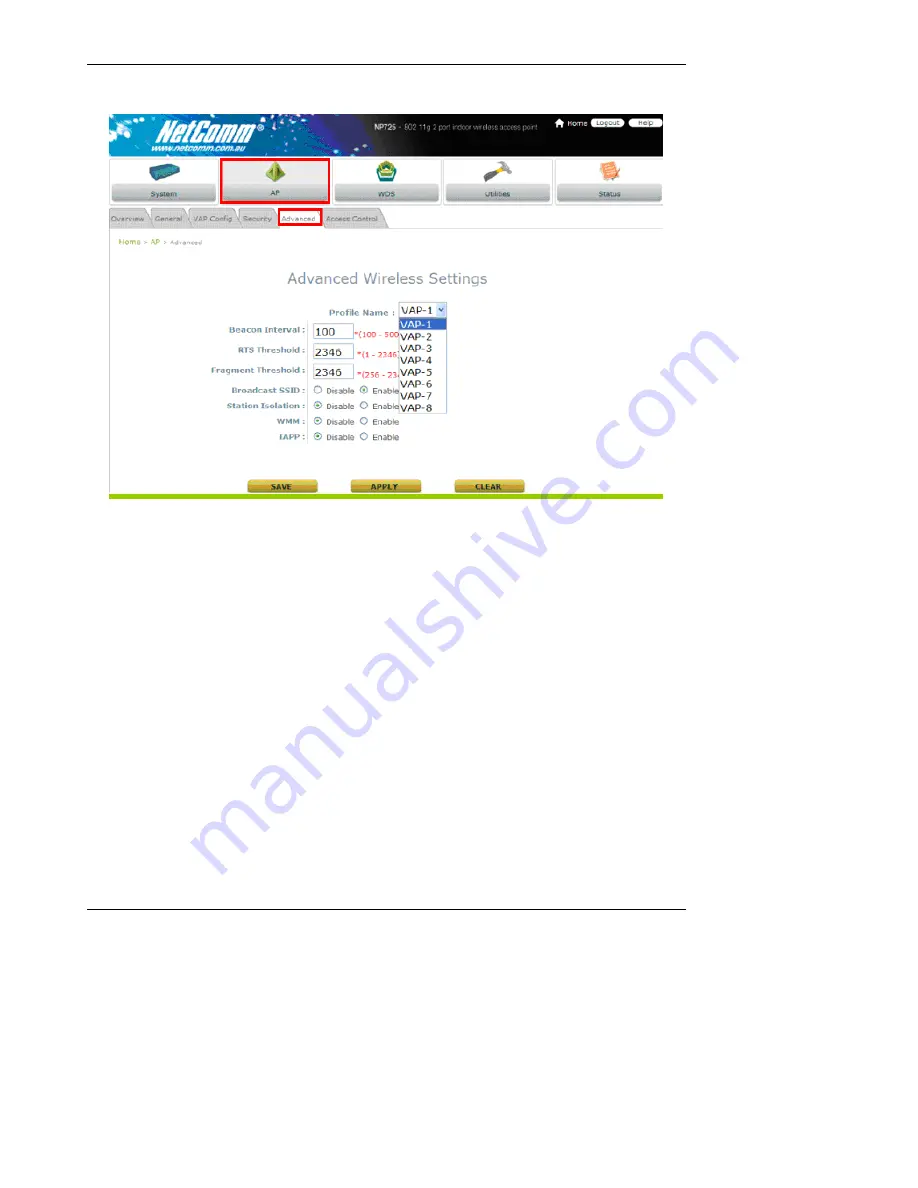
Chapter 4. Web Management Interface
33
4.2.5 Advanced Wireless Settings
Virtual AP advanced settings should mostly meet general requirements. Take the following parameters if
occasionally it is necessary to tune or debug the wireless network.
Beacon Interval
: This interval specifies the time interval, in milliseconds. The default value is 100, valid from 25
to 500ms.
RTS Threshold
: To control station access to medium and to alleviate this effect of the hidden terminal problem,
administrators can tune this RTS threshold value. It should have a value among 1-2346 and is default to 2346.
Fragment Threshold
: A unicast frame larger than this threshold will be fragmented before transmission. If
significant numbers of collisions are occurring, administrators can try to take a smaller value of the
fragmentation threshold to see if it helps.
Broadcast SSID
: Disable this item will prevent the NP725 from broadcasting its SSID publicly.
Station Isolation
: When enabled, wireless client stations are isolated from each other. In other words, one PC
associated to the Virtual AP is not able to see other PCs on the same Virtual AP.
However, wireless clients are
not isolated from wired clients on the LAN environment.
WMM
: WMM (Wi-Fi Multimedia) provides basic Quality of service (QoS) features to Wi-Fi networks. When
enabled, it prioritizes traffic according to four Access Categories (AC) - voice, video, best effort, and background.
However, it does not provide guaranteed throughput
IAPP
: IAPP (Inter-Access Point Protocol) is to support smooth users’ hand-over (roaming) from one access
point to another. When enabled, it provides a better capability for wireless client stations to roam among APs
with the same SSID.
















































